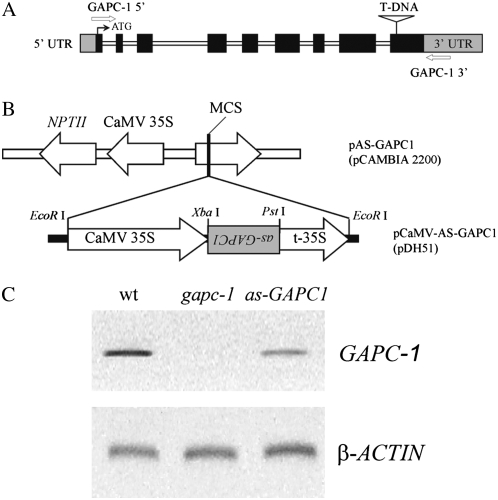Figure 1.
Schemes of gapc-1 null mutant and the antisense construction as-GAPC1. A, Intron-exon organization of GAPC-1 gene of an Arabidopsis T-DNA insertional mutant line (SALK_010839). Arrows show the locations and directions of primers used to screen for gapc-1 mutant (GAPC-1 5′, GAPC-1 3′). The structure of the T-DNA is not drawn to scale. The GAPC-1 gene contains nine exons and eight introns. The white triangle shows the T-DNA position in the ninth exon region of GAPC-1. B, Schematic representation of the antisense gene (as-GAPC1) used to generate transgenic plants expressing a fragment (418 bp) of GAPC-1 in antisense orientation. The coding sequence of Arabidopsis GAPC-1 was cloned under the control of cauliflower mosaic virus 35S (CaMV35S) promoter from pDH51 vector and then subcloned on pCAMBIA 2200 multiple cloning site (EcoRI site). MCS, Multiple cloning site; t-35S, 35S terminator; NPTII, kanamycin resistance gene. C, Steady-state levels of GAPC-1 mRNA in wild-type, mutant gapc-1, and transgenic as-GAPC1 plants. Total RNA was extracted from 42-d-old leaves and reverse transcribed using random hexamers and then amplified with GAPC-1-specific primers. The housekeeping gene β-ACTIN (At3g18780) was used as internal control.

